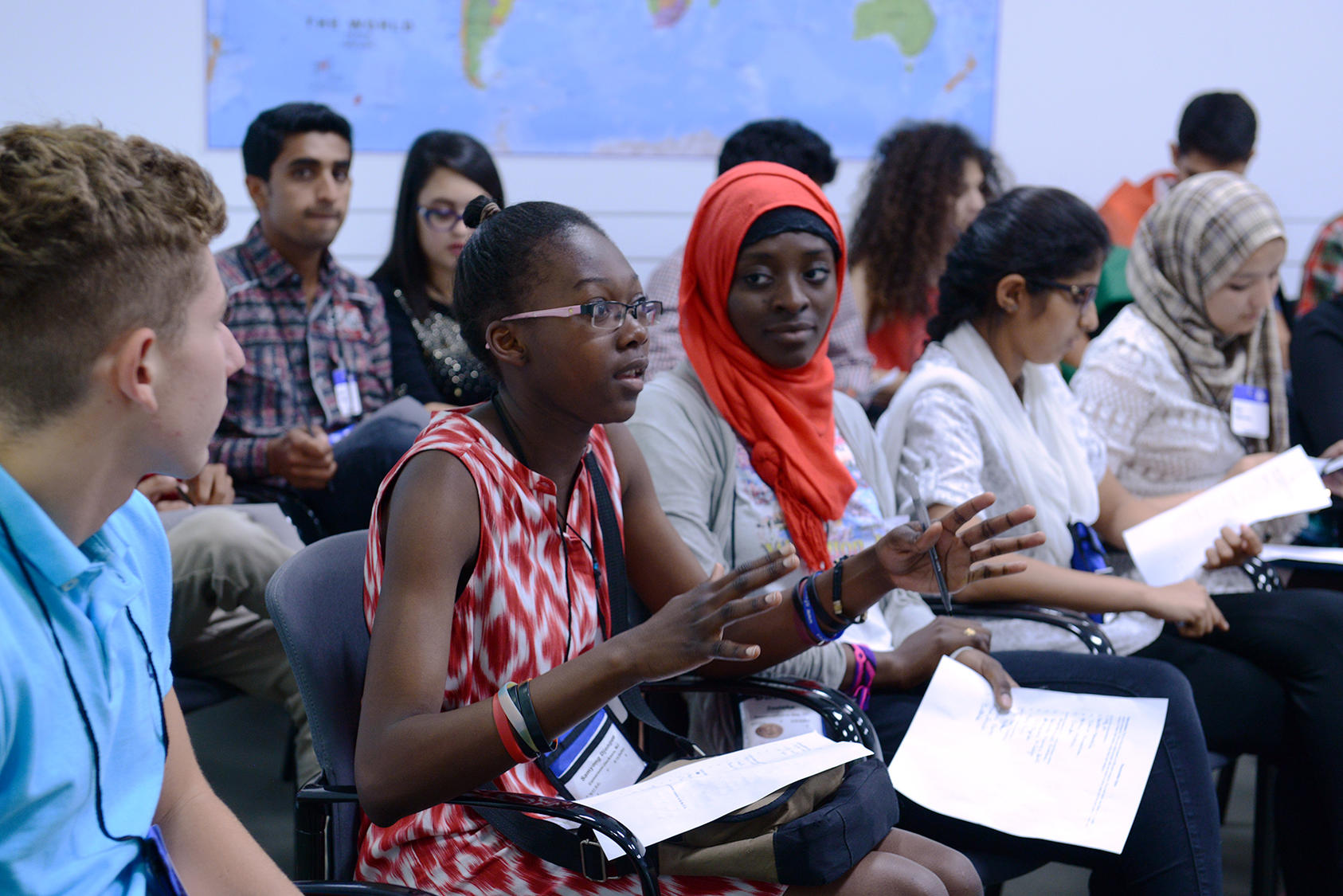Ideas for Action
USIP’s public education program works with young people to educate them about conflict management and to engage them in peacebuilding. There are many ways for students to be active peacebuilders in their schools, communities and world. Below are 10 ways to build peace.
10 Ways to Build Peace
- Become an informed citizen: Keep up to date on global news and events related to international conflict management through the USIP Web site and other news sources. Learn about the role the U.S. government, U.S. organizations, and others play in building peace in conflict situations around the world, and share that knowledge with others.
- Get inspired by young peacebuilders around the world: Learn about the impact of armed conflict on young people around the world, and about the ways in which young people are acting as peacebuilders (for instance, the teenagers who participate in the Seeds of Peace summer camp). Find ways to share this information with others, and explore how you can play a role as a peacebuilder, as an individual or with an organization.
- Research famous peacebuilders: Interview your parents, grandparents or guardians and ask them who the famous peacebuilders of their generation were when they were growing up. Then research these individuals to learn about the role they played in managing conflict and building peace. One source for information is the Nobel Peace Prize Web site.
- Use USIP’s educational resources: Ask your teacher to download the Peacebuilding Toolkit for Educators and to use some of the lessons and activities in your classroom.
- Visit USIP for an educational program: Organize a class trip to USIP to participate in a workshop on international conflict management that integrates multimedia exhibits and peacebuilding activities. To plan your visit, click here.
- Raise peacebuilding issues at your school: At your school, initiate discussions in your classes about issues of international peacebuilding and conflict happening in the world. (Check out USIP’s blog for ideas.) Invite a speaker who has been in a conflict zone or who has worked in a conflict zone to address the students in your school. Contact your local World Affairs Council or the Peace Corps to find speakers in your area.
- Follow peacebuilding organizations and people on social media: Research organizations or individuals that build peace and follow them on Twitter, Facebook, Instagram or Snapchat. Share relevant updates with your social networks. You can also “like” USIP on Facebook and follow us on Twitter to stay updated on global issues in peacebuilding and conflict management.
- Study Abroad: Explore options for studying abroad, as an opportunity to learn first-hand about other cultures and to gain or hone important cross-cultural communication skills. Find more information about study abroad on our site. Research opportunities for other forms of international exchange and present ideas to your school teachers and administrators.
- Explore peacebuilding careers: Do some research of your own on careers in conflict management and peacebuilding field, and learn about all of the various ways in which peacebuilding takes places around the world every day.
- Take the Peace Day Challenge: Join the global effort to turn the International Day of Peace (September 21 each year) into a day of global action, affirming peace as a real and practical alternative to the violence we see daily in the news.
